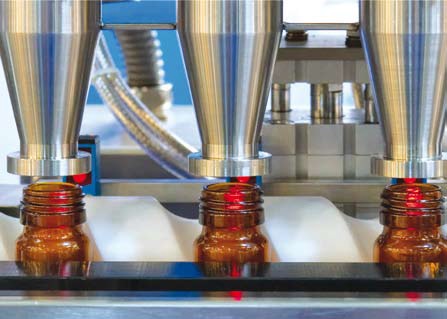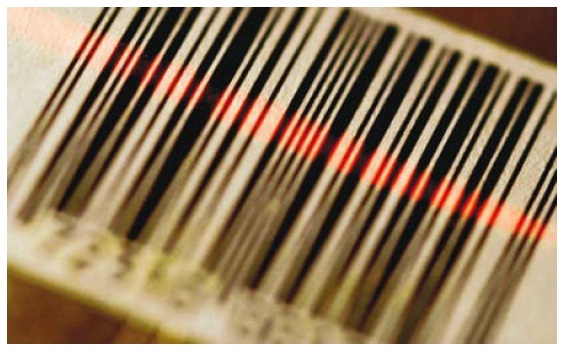The Impact of Implementing Safety Features in Pharmaceutical Packaging and Labelling - Serialization, Unique Device Identification (UDI) and aggregation catalyse a paradigm shift for the entire industry and are already impacting the pharmaceutical supply chain. In some cases, mandated serialization is expediting aggregation implementation.
The global pharmaceutical market is a complex and dynamic industry that is continuously evolving in response to a variety of market influencers. The landscape of the pharmaceutical market has changed significantly with the rise of generic drugs and the rapid expansion of mergers and acquisitions. Many companies are reevaluating the location of their headquarters and rethinking both their development and production processes. Simultaneously, government mandated serialisation has created a scramble amongst pharmaceutical companies to implement tracking solutions to comply with new regulations.
The medical device industry has undergone significant changes in recent years due to the passing of the Affordable Care Act (ACA) and the expansion of government regulations, including the adoption of Unique Device Identification (UDI) numbers. With new purchasing players entering the market because of the ACA, medical device companies have shifted their marketing to new partners with a focus on value-based solutions.
While they are in different industries, pharmaceutical and medical device companies often face a surprisingly similar array of challenges and market realities. Businesses in both industries are actively addressing new government regulations often resulting in new equipment purchases. Both industries are under increasing pressure to produce more at lower costs while not sacrificing quality. As a result, companies are turning to contract services at an increasing rate. The pair also share a continued increase in mergers and acquisitions. Also, rapid growth can be seen in the pharmaceutical and medical device industries in emerging markets, particularly the Asia-Pacific region.
Faced with the regulatory challenges of serialisation and UDI along with pressure to produce at low cost, healthcare manufacturers are looking at new equipment to replace outdated production lines. Nearly half of healthcare manufacturers interviewed in PMMI’s 2016 Pharmaceutical and Medical Devices: Trends and Opportunities in Packaging Operations1 research report continue to replace legacy equipment and buy new equipment while two-thirds of participating companies predict spending more on capital equipment in the next 12-24 months. (In this report, produced by PMMI, sixty industry professionals from pharmaceutical, medical device and contract service companies share their experiences in complying with tracking regulations, operational challenges and their future equipment needs.)
With demand for medicines and medical devices growing globally, manufacturers face choices when it comes to which countries they produce their products.
Among the advantages to be gained from locating plants outside the US are:
• Lower labour costs
• Tax advantages
• Overall cost reductions
• Lenient regulatory environment
• Cheaper raw materials.
Imports account for at least half of all medical devices used in the US, while about 80 per cent of active pharmaceutical ingredients in medications sold in the US are manufactured elsewhere, according to the Food and Drug Administration (FDA). Over the past decade, the value of imported medical devices has steadily increased, gradually eroding the previous trade surplus. Many imports are lower-tech products, such as surgical gloves and instruments. Continuing shifts in trade patterns have resulted in China and Mexico becoming significant exporters of mid to lower-tech equipment and supplies to the US
Offshore manufacturing is a growing trend. Many of the pharmaceutical products and medical devices produced outside the US by US-based manufacturers are imported back into the country. Just a decade ago, six million shipments of FDA-regulated goods passed through the nation’s 200 ports of entry, while in 2016 the number of shipments quadrupled to 24 million.
Most Active Pharmaceutical Ingredients (API) are produced offshore, so much so, that many companies bulk produce overseas before shipping back to the US for primary packaging. Because of the massive amount of imports, offshore companies are seeking to buy US operations to get a foothold in the US and vice versa.
Branded drugs are a different animal, however, and are usually manufactured entirely in the US to alleviate risk. The risk lies in the possibility of introducing counterfeit ingredients into the pharma supply chain. Of the top 10 most valuable counterfeit markets, pharmaceuticals rank number one according to PMMI’s 2016 Brand Protection and Product Traceability Market Research report.2 (PMMI compiled the 2016 Brand Protection and Product Traceability Market Research report from the insights of 75 brand manufacturers, industry experts and technology suppliers who shared their experiences complying with traceability regulations in the food, beverage and pharmaceutical industries.) The counterfeit drug market is growing rapidly, and Deloitte accountants currently value it between USD 75 billion to USD 200 billion. The World Health Organization (WHO) reports that over 25 per cent of medicines available in developing countries, and 50 per cent of products ordered online, are counterfeit.

The solutions available in the global anti-counterfeiting market are predicted to witness significant growth in the next five years with CAGRs ranging from 12.8 per cent to 16.1 per cent. In fact, the growth of the global anti-counterfeiting market will outpace the overall market segment growth of food, beverage and pharmaceutical industries by roughly two to three times in the next five years.
The entire supply chain requires checks-and-balances to close the gaps when tracking, authenticating and locating products as custody changes hands during multiple deliveries.
In response to increasing drug integrity concerns, more than 40 countries have introduced track-and-trace laws to help regulate product as it passes through the supply chain. By early 2019, more than 75 per cent of the world’s prescription medications will be protected by legislation.

In the U.S., drug serialisation began in earnest in 2013 with a full programme expected by 2023 (see below)
• 2013: Legislation enacted by U.S. Congress, signed into law: Drug Supply Chain Security Act (DSCSA)
• 2015: Manufacturers, wholesalers and re-packagers required to provide and/or receive pedigree for each transaction
• 2017: Manufacturers required to include a product identifier number on each package and homogenous case of prescription drug products
• 2019: Wholesalers required to accept or distribute only prescription drug products that include a product identifier number
• 2020: Dispensers required to accept or distribute only prescription drug products that include a product identifier number
• 2023: Mandates the full implementation of an electronic system (aggregation) ensuring compatibility throughout all stages of distribution.
For medical devices, the FDA is establishing a UDI system to identify medical devices through their distribution and use.
When fully implemented, the label of most devices will include a UDI in human-readable and machine-readable form. Device labellers must also submit specified information about each device to the FDA’s Global Unique Device Identification Database.
• 2014: The labels and packages of class III medical devices and devices licensed under the Public Health Service Act (PHS Act) must bear a UDI. Must be submitted to the GUDID database
• 2016: The labels and packages of implantable, life-supporting and life-sustaining devices must carry a permanent UDI. Must be presented to the GUDID database
• 2017: The labels and packages of class II medical devices must bear a UDI. Must be submitted to the GUDID database
• 2019: Data for class I devices and devices that have not been classified into class I, class II or class III, but are required to be labeled with a UDI, must be submitted to the GUDID database
• 2021: Class I devices and devices that have not been classified into class I, class II or class III, but are required to be labeled with a UDI, must a bear UDI as a permanent marking on the device itself.
No one technology can offer 100 per cent serialisation and ensure product safety. Solutions will go far beyond the idea of a simple fix, creating added layers of supply chain security. Pharmaceutical manufacturers are analysing every step along their supply chains from incoming materials to primary and secondary packaging all the way through palletising and transportation. The use of 1D barcoding throughout each of these stages was the most attractive solution employed by respondents to the 2016 Brand Protection and Product Traceability report. The report also indicated that 30 per cent used temperature sensors at the palletising and transportation stages, while the use of pallet tags, RFID tags and smart inks may grow as these technologies become more accessible. Additionally, there is a broad range of solutions to help brands track and verify their products. These include holograms and covert techniques like RFID (Radio Frequency Identification) that require specific equipment to test product authenticity. Other sophisticated technologies to enhance brand security include smart inks, covert markings and temp sensors. Temp sensors are thermally sensitive resistors that can communicate whether a product has spoiled or faced exposure to temperatures outside of an acceptable range—all potential indicators that product integrity has been jeopardised.
Pharma companies are looking for ways to recover costs by improving manufacturing, packaging and handling processes–packaging changes are mandatory because all serialisation information can’t fit on some products. Because of this, it is undeniable that serialisation negatively affects overall equipment effectiveness.
Pharmaceutical companies are struggling with the costs associated of meeting regulations and setting up an internal infrastructure for data collection. With a limited number of industry suppliers able to help implement the complex challenges of serialisation and UDI, understanding the requirements is a significant hurdle and can cause delays.
The cost alone is driving some smaller operations completely out of business. The 2016 Pharmaceutical and Medical Devices: Trends and Opportunities in Packaging Operations report cites costs at up to USD 4 million to implement serialisation at one manufacturing site.
Companies struggling with internal infrastructure have found it difficult to determine the best method to capture, manage and transmit data. Defining rules and requirements to meet all regulations has also proved difficult as has acquiring and procuring equipment when there are a limited number of suppliers. Machine delivery times can be as high as two years.

Not only is the equipment hard to get, but it is highly expensive with a projected return on investment up to 30 years.
One way equipment manufacturers can help the industry is with modular machine concepts that are compatible with existing lines equipped with matching software.
The number one global event for solutions for serialisation is Healthcare Packaging EXPO (Sept. 25-27; Las Vegas Convention Center), where pharmaceutical manufacturers can find many resources and solutions to meet track-and-trace and anti-counterfeiting demands. Co-located with PACK EXPO Las Vegas, the show will bring together top CPGs from around the world to explore state-of-the-art healthcare and packaging technologies, equipment and materials as well as exchange ideas with peers and build professional relationships. The event boasts an expected 30,000 attendees, including 5,000 international visitors from more than 125 countries, combined with 2,000-plus exhibiting companies spanning 800,000 net square feet of a nearly sold-out show floor.
Beyond the technologies displayed on the show floor, attendees will find tremendous educational opportunities in the Innovation Stage where suppliers present free 30-minute seminars on breakthrough technologies throughout the day.
Registration, which includes access to both Healthcare Packaging EXPO, and PACK EXPO Las Vegas is USD 30 until Sept. 1 when the price increases to USD 100. For more information and to register online, visit packexpolasvegas.com or hcpelasvegas.com.
Foot Notes:
1 https://www.amazon.com/gp/huc/view.html?ie=UTF8&newItems=C3I4K6TCX072UH,1
2 http://www.pmmi.org/Research/ResearchTrends.cfm?ItemNumber=32377